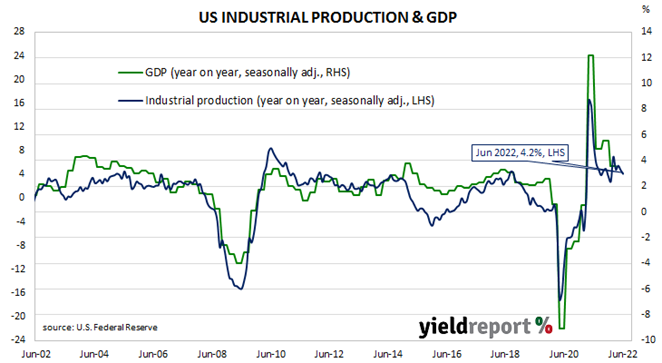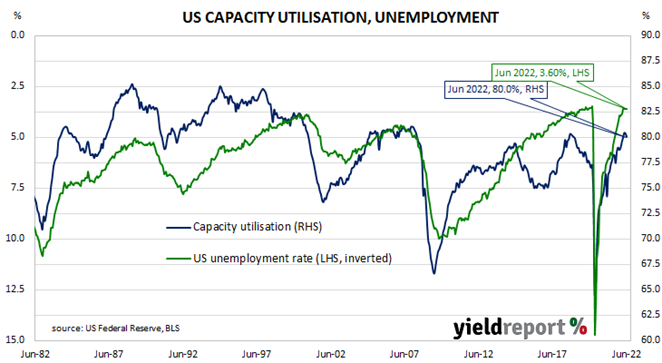Summary: US industrial output down 0.2% in June, below market expectations; up 4.2% over past 12 months; all major components ex mining miss expectations, prior months’ revised lower; capacity utilisation rate down 0.3ppts to 80.0%, just short of long-term average.
The Federal Reserve’s industrial production (IP) index measures real output from manufacturing, mining, electricity and gas company facilities located in the United States. These sectors are thought to be sensitive to consumer demand and so some leading indicators of GDP use industrial production figures as a component.
US production collapsed through March and April of 2020 before recovering the ground lost over the fifteen months to July 2021.
According to the Federal Reserve, US industrial production contracted by 0.2% on a seasonally adjusted basis in June. The result was less than the flat result which had been generally expected as well as May’s 0.0% after it was revised down from 0.2%. On an annual basis, the growth rate slowed from May’s revised figure of 4.8% to 4.2%.
“Every major component except mining missed expectations, and all major components were revised sharply lower in prior months,” said Westpac Senior Foreign Exchange Strategist Sean Callow.
Long-term US Treasury bond yields moved moderately lower on the day. By the close of business, the 10-year Treasury yield had lost 4bps to 2.92% while the 30-year yield had shed 3bps to 3.08%. The 2-year yield finished unchanged at 3.12%.
The same report includes US capacity utilisation figures which are generally accepted as an indicator of future investment expenditure and/or inflationary pressures. Capacity usage had hit a high for the last business cycle in early 2019 before it began a downtrend which ended with April 2020’s multi-decade low of 64.2%. June’s reading declined from May’s revised figure of 80.3% to 80.0%, just short of the long-term average of 80.1%.
While the US utilisation rate’s correlation with the US jobless rate is solid, it is not as high as the comparable correlation in Australia.



